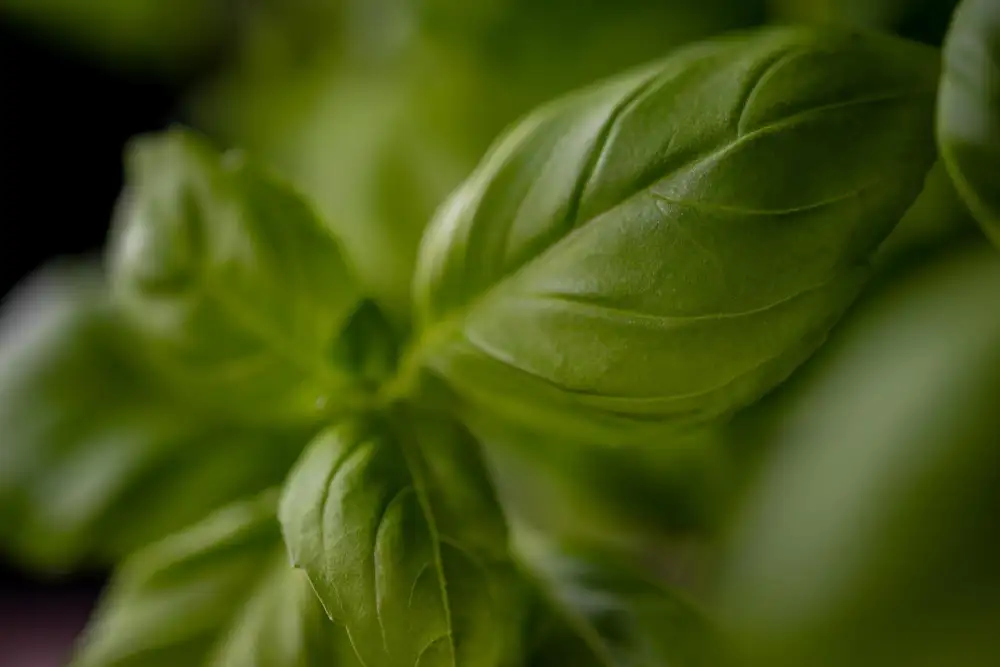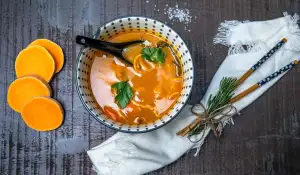Unlock the Secrets of Homemade Italian Seasoning: A Flavorful Guide for Food Enthusiasts

Italian seasoning is a versatile blend of herbs and spices that adds a burst of flavor to any dish. It is a staple in Italian cuisine and can be used in a variety of recipes, from pasta sauces to roasted vegetables. Making your own homemade Italian seasoning allows you to customize the flavors to suit your taste preferences. In this guide, we will unlock the secrets of homemade Italian seasoning and show you how to create a flavorful blend that will elevate your dishes to new heights. Get ready to embark on a culinary journey filled with aromatic herbs and tantalizing spices!
Ingredients required for making Italian Seasoning
To make your own homemade Italian seasoning, you'll need a handful of simple ingredients. Here's what you'll need:
1. Dried Basil: This herb is the backbone of Italian seasoning, adding a sweet and slightly peppery flavor to your dishes.
2. Dried Oregano: Known for its robust and earthy taste, dried oregano adds depth to your seasoning blend.
3. Dried Thyme: With its subtle lemony flavor, dried thyme brings a refreshing twist to the mix.
4. Dried Rosemary: This aromatic herb lends a pine-like fragrance and a hint of mintiness to your Italian seasoning.
5. Dried Parsley: Adding a touch of freshness and vibrant green color, dried parsley complements the other herbs beautifully.
6. Garlic Powder: To give your seasoning an irresistible savory kick, garlic powder is essential.
7. Onion Powder: Providing a mild onion flavor without the texture, onion powder enhances the overall taste profile.
8. Red Pepper Flakes (optional): If you like some heat in your dishes, red pepper flakes can be added for a spicy kick.
By combining these ingredients in just the right proportions, you'll unlock the authentic flavors of homemade Italian seasoning that will elevate any dish to new heights of deliciousness!
Step-by-step instructions on making Italian Seasoning
1. Gather the ingredients: 2 tablespoons dried basil, 2 tablespoons dried oregano, 2 tablespoons dried thyme, 1 tablespoon dried rosemary, 1 tablespoon dried marjoram, 1 tablespoon garlic powder, 1 tablespoon onion powder, and 1 teaspoon red pepper flakes.
2. Measure out each ingredient and place them in a small bowl.
3. Mix all the ingredients together until well combined. You can use a spoon or your hands to ensure even distribution of the herbs and spices.
4. Transfer the mixture to an airtight container or spice jar for storage.
5. Label the container with the name and date of preparation to keep track of freshness.
6. Store the Italian seasoning in a cool, dry place away from direct sunlight to maintain its flavor and potency.
7. To use the seasoning, sprinkle it over pasta dishes, pizzas, roasted vegetables, or grilled meats for an authentic Italian flavor.
8. Adjust the amount of seasoning according to your taste preferences. Start with a small amount and add more if desired.
9. Experiment with different combinations of herbs and spices to create your own unique blend of Italian seasoning.
10. Remember to replace your homemade Italian seasoning every six months to ensure optimal flavor.
By following these simple steps, you can unlock the secrets of homemade Italian seasoning and elevate your dishes with its aromatic flavors. Enjoy the satisfaction of creating your own blend that adds a touch of Italy to any meal!
Tips for storing and using Italian Seasoning
- Store your homemade Italian seasoning in an airtight container in a cool, dark place to preserve its flavor and aroma.
- Avoid storing it near heat sources or in direct sunlight, as this can cause the herbs to lose their potency.
- Label your container with the date of preparation to ensure freshness and keep track of its shelf life.
- Use Italian seasoning as a versatile spice blend in various dishes such as pasta sauces, marinades, dressings, soups, and roasted vegetables.
- Sprinkle it on pizza or garlic bread for an extra burst of flavor.
- Experiment with different quantities to find your preferred level of intensity. Start with a small amount and adjust according to taste.
- Combine Italian seasoning with olive oil or butter to create a flavorful herb-infused spread for bread or grilled meats.
- Don't limit yourself to traditional Italian recipes; try adding this seasoning blend to other cuisines for a unique twist.
- Remember that dried herbs have a more concentrated flavor than fresh ones, so use them sparingly when substituting in recipes that call for fresh herbs.
Variations and customizations for Italian Seasoning
Italian seasoning is versatile, allowing you to customize it according to your taste preferences. Here are some variations you can try:
1. Spicy Kick: If you enjoy a bit of heat, add crushed red pepper flakes or cayenne pepper to your Italian seasoning blend. This will give it a spicy kick that pairs well with pasta dishes and pizzas.
2. Herb Infusion: Experiment with different herbs to create unique flavors. Try adding dried oregano, thyme, or rosemary for an herb-infused Italian seasoning blend.
3. Citrus Twist: For a refreshing twist, zest some lemon or orange peel and mix it into your Italian seasoning. The citrusy aroma will add a bright and tangy flavor to your dishes.
4. Garlic Lover's Delight: If you're a garlic lover, amp up the garlic flavor by adding more garlic powder or even minced dried garlic to your Italian seasoning mix.
5. Mediterranean Blend: Incorporate other Mediterranean herbs like basil, marjoram, or sage into your Italian seasoning for a more complex and aromatic blend.
Remember, the beauty of homemade Italian seasoning lies in its versatility. Feel free to experiment with different herbs and spices until you find the perfect combination that suits your palate. Get creative and have fun exploring the endless possibilities of homemade Italian seasoning!
In conclusion, making your own Italian seasoning is a fantastic way to elevate the flavors of your dishes and add a touch of authenticity to your cooking. By following the simple steps and using high-quality ingredients, you can create a blend that is bursting with aromatic herbs and spices.
The beauty of homemade Italian seasoning lies in its versatility. Whether you're making pasta sauces, soups, marinades, or even sprinkling it on roasted vegetables, this flavorful blend will enhance any dish. The combination of basil, oregano, thyme, rosemary, garlic powder, and red pepper flakes creates a harmonious balance that will transport your taste buds straight to Italy.
By storing your homemade Italian seasoning in an airtight container in a cool and dark place, you can enjoy its vibrant flavors for months. Remember to label it with the date of preparation for reference.
Feel free to experiment with different variations and customizations according to your personal preferences. You can add dried lemon zest for a citrusy twist or include fennel seeds for an extra depth of flavor. The possibilities are endless!
So why settle for store-bought when you can unlock the secrets of homemade Italian seasoning? With just a few simple steps, you can create a blend that will take your dishes from ordinary to extraordinary. Embrace the joy of cooking and savor every bite with the delightful flavors of homemade Italian seasoning.
Published: 23. 11. 2023
Category: Food



